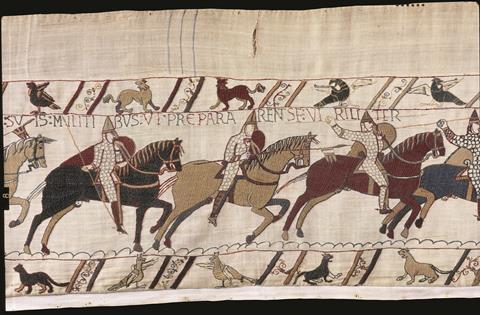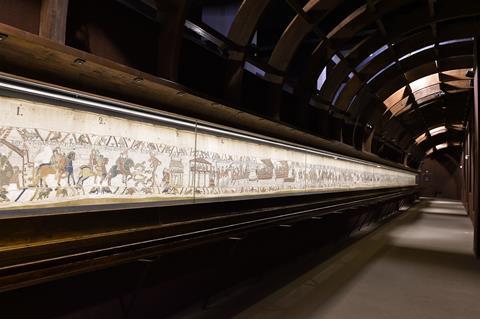The tapestry, which depicts the 1066 Norman invasion of England and the Battle of Hastings and measures 70-metres, will go on display in the British Museum’s Sainsbury Exhibitions Gallery in the autumn of 2026, the first time it has been shown in the UK since it was made almost 1,000 years ago.

The displaying of the tapestry in the museum is part of an exchange which will see items from the British Museum go on temporary display in Normandy, France. Anglo-Saxon discoveries from Sutton Hoo and the Lewis chess pieces are among the items which will travel to Normandy.
Other items from the period from the British Museum’s collection and loans from other museums will also go on display alongside The Bayeux Tapestry in the gallery.
The Bayeux Museum, where the tapestry has been displayed since 1983, will close for a two-year renovation from 1st September 2025. The tapestry will return to France the following year in time for the Bayeux Museum’s reopening.
Nicholas Cullinan, director of the British Museum, said: “The Bayeux Tapestry is one of the most important and unique cultural artefacts in the world, which illustrates the deep ties between Britain and France and has fascinated people across geographies and generations. It is hard to overstate the significance of this extraordinary opportunity of displaying it at the British Museum and we are profoundly grateful to everyone involved.
“This will be the first time the Bayeux Tapestry has been in the UK since it was made, almost 1,000 years ago. We are also delighted to send treasures from the British Museum representing all four nations of the UK – including Sutton Hoo treasures and the Lewis chess pieces – to France in return.”
About the Bayeaux Tapestry
The Bayeux Tapestry is a 70-metre-long embroidered masterpiece which tells the story of William the Conqueror’s conquest of England in 1066. The embroidery in wool thread on linen cloth was created in the UK and dates back to the 11th century.

58 scenes, 626 characters and 202 horses are depicted on the tapestry, providing an account of the medieval period in Normandy and England. It has been used to obtain valuable information about civil and military architecture, armour and seafaring in the Viking tradition, as well as details about everyday life.
The tapestry has survived many major historical events including World War Two. At the outbreak of the conflict it was placed in an underground shelter for preservation, before later being transferred to Paris by the German commission for the protection of works of art.
School visits to the British Museum
The British Museum welcomes school groups from EYFS to 16+ for self-led visits, expert-led school sessions and visits to the museum’s special exhibitions.
School bookings should be made in advance. The museum has dedicated areas for school groups in the Clore Centre for Education, the Ford Centre for Young Visitors and the Samsung Digital Discovery Centre.
For more information about school visits to the British Museum, go to www.britishmuseum.org/learn/schools.










